How To Heat a Chicken Coop
- January 16, 2024
- 2 comment
Ensuring the well-being of our feathered companions takes center stage for every caring chicken owner when the colder months roll in. As winter gradually takes hold, the need to establish an efficient heating system within the chicken coop becomes paramount. In the following paragraphs, I’ll delve into my journey and accumulated insights, offering a comprehensive guide on the best practices to keep your cherished chickens warm and content throughout the winter chill.
From selecting suitable heating methods to addressing insulation concerns, this review aims to provide practical advice to ensure your clucky friends remain snug and in optimal health despite plummeting temperatures.

Drawing from my own experiences, I’ll shed light on the importance of striking a balance between warmth and safety, emphasizing the effectiveness of radiant heaters and the significance of a well-insulated coop. Furthermore, we’ll explore natural alternatives, such as utilizing quilts for added warmth, and delve into practical solutions for maintaining unfrozen water sources, a critical aspect often overlooked during winter. Through these detailed insights, this review aspires to empower chicken owners with the knowledge needed to create a cozy haven for their feathered flock during the colder seasons.
List on How To Heat a Chicken Coop:
- Choosing the Right Heating Method
- Insulation is Key
- The Cozy Quilt Approach
- Frost Free Watering Solutions
- Safety First
Ensuring Safe Heating Practices for Your Chicken Coop
Approximately twenty minutes later, I concluded my phone call and retraced my steps toward the chicken coop, intending to replenish the water and feed my feathery companions. As I approached, an increasingly pungent odor of smoke heightened my concern. Hastening my pace, my mind braced for the worst—a potential fire within the coop. Swinging open the door, a rush of smoke greeted me, propelling me into a state of urgency as I entered to assess the situation.
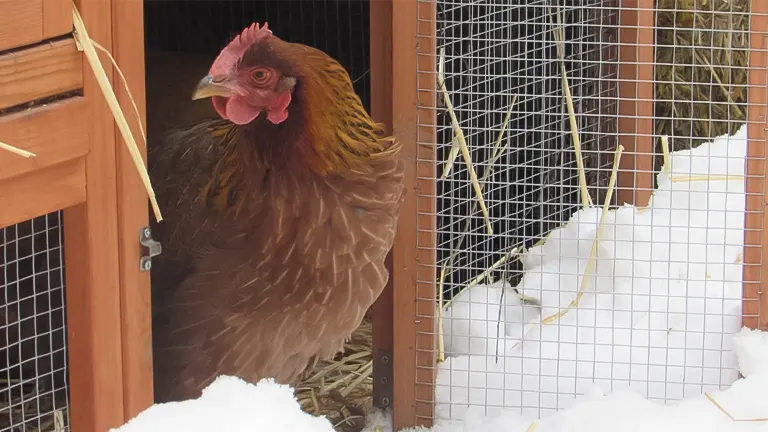
Turning the corner, I was met with the alarming sight of a heat lamp hanging precariously through a burnt hole in the floor, with smoke and flames swirling around it. My immediate focus shifted to the chickens huddled in a corner, and with a rapid count, I breathed a sigh of relief each of them was unharmed.
Regrettably, I found myself unprepared for such an emergency. No fire extinguisher was on hand, and the water bib outside lacked a connected hose. Bolting across the yard, I retrieved a hose and hurriedly returned to secure it to the water bib. Amidst the urgency, my mind raced as I diligently fastened the hose. With the water spout turned on, I dashed back into the coop to combat the flames. I doused the fire, flung open the coop windows, and offered comforting words to the apprehensive chickens in an attempt to soothe their distress.
1. Choosing the Right Heating Method
In my pursuit of the ideal heating method for my chicken coop, I’ve conducted extensive experimentation over the years, leading me to a crucial realization: the need to strike a delicate balance between warmth and safety.

Among the plethora of options available, I’ve found radiant heaters to be one of the most reliable choices. These innovative heaters operate by emitting heat directly to the objects and animals within their line of sight, ensuring efficiency in heating while minimizing energy wastage. What sets radiant heaters apart is their ability to provide consistent warmth without posing a fire hazard, a feature that has proven instrumental in creating a secure and comfortable environment for my flock.
The decision to suspend the radiant heater from the ceiling further enhances its effectiveness, evenly distributing warmth throughout the coop and maintaining an optimal temperature for my clucky companions. The benefits of radiant heaters extend beyond their efficiency and safety; they contribute to a more cost-effective and sustainable heating solution for the chicken coop.
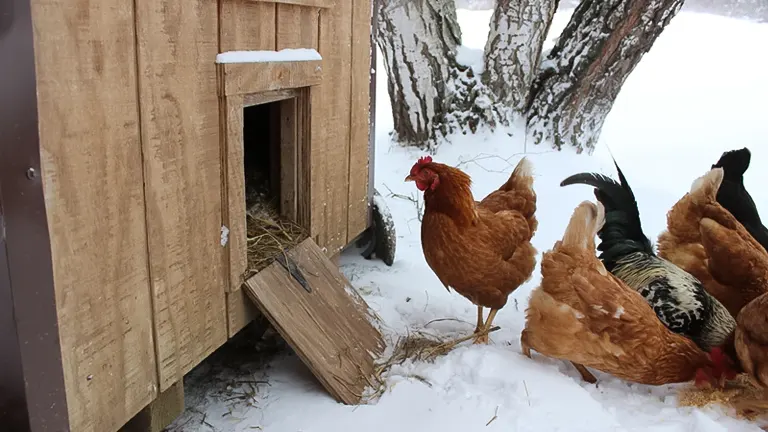
By targeting the specific area where heat is needed, radiant heaters reduce the overall energy consumption compared to other heating methods. This not only aligns with eco-conscious practices but also translates to potential savings on energy bills. Through my experiences, I’ve come to appreciate the merits of choosing the right heating method, with radiant heaters emerging as a dependable and resource-efficient solution for ensuring the well-being of my feathered friends during the colder months.
2. Insulation is Key
Establishing proper insulation within your chicken coop emerges as a pivotal consideration before delving into any heating solutions. My own experience has taught me the significance of this aspect, as I once found myself grappling with the repercussions of overlooking insulation while concentrating solely on heating. A well-insulated coop acts as a thermal barrier, effectively trapping and preserving the warmth generated by heaters.

This not only enhances the overall effectiveness of your heating system but also contributes to substantial reductions in energy costs. Taking a proactive approach, I discovered that sealing gaps or cracks in the coop’s walls and strategically incorporating insulation material where necessary can be transformative, creating an environment that consistently provides comfort and protection against the winter chill for your cherished flock.
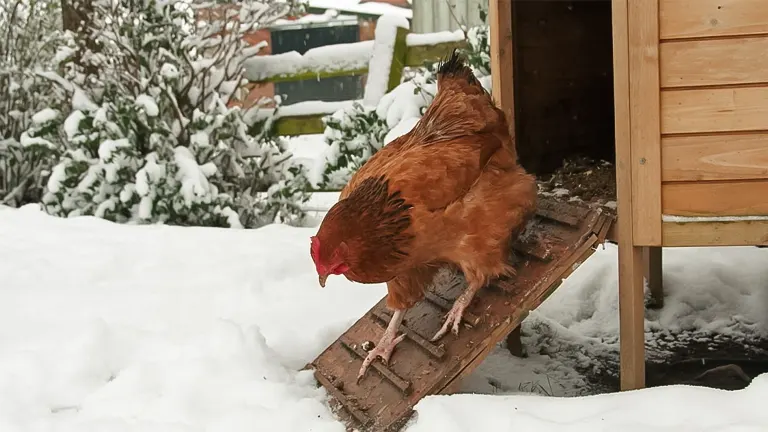
The intricate process of ensuring adequate insulation involves a meticulous inspection of the coop’s structure. Identifying and sealing any potential points of heat loss, such as gaps around windows, doors, or vents, plays a crucial role in fortifying the coop against external cold temperatures.
Moreover, strategic placement of insulation material, be it in the walls, ceiling, or flooring, further fortifies the coop’s thermal efficiency. By adopting these detailed measures, chicken owners can ensure a cozy and well-insulated haven for their feathered companions, fostering an environment that not only sustains warmth but also promotes energy-conscious practices for the long-term welfare of the flock.
3. The Cozy Quilt Approach
Embarking on the “Cozy Quilt Approach” offers an organic and straightforward solution for chicken owners looking to enhance their flock’s comfort during chilly nights. This alternative, rooted in simplicity and warmth, involves draping the chicken coop with substantial blankets or quilts. The strategic placement of these coverings serves as an insulating layer, effectively trapping warmth within the coop and shielding the feathered inhabitants from the biting cold.
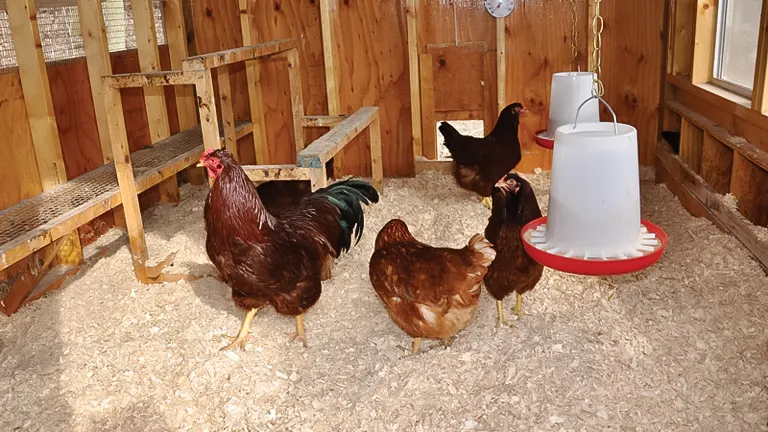
It’s a testament to the timeless efficacy of low-tech solutions in addressing the specific needs of your chickens during colder periods. However, it’s crucial to strike a balance when employing the Cozy Quilt Approach. While the heavy blankets contribute to a cozy and snug environment, it’s essential to remove them during daylight hours. This precaution ensures proper ventilation within the coop, preventing the accumulation of excess humidity.
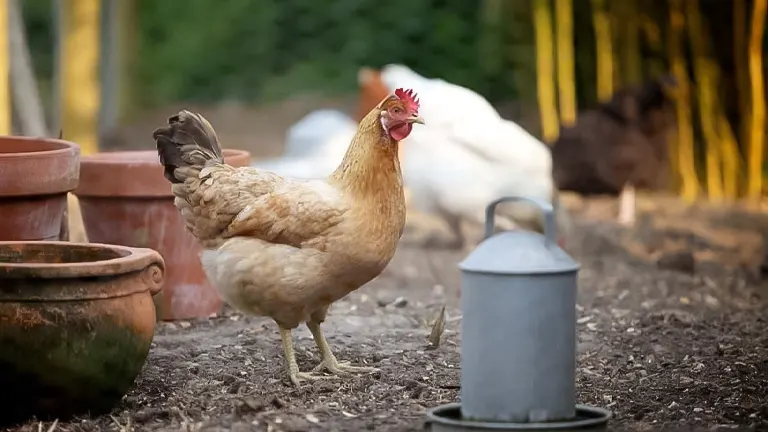
Striking this delicate equilibrium allows your feathered friends to benefit from the warmth provided by the quilts during the night, while also enjoying a well-ventilated and comfortable living space during the day. The Cozy Quilt Approach thus stands as a testament to the versatility of solutions that prioritize the well-being of your chickens, showcasing the effectiveness of a simple yet thoughtful strategy in addressing their specific environmental needs.
4. Frost-Free Watering Solutions
Addressing the challenge of providing frost-free water to your chickens becomes a crucial aspect of winter care for your flock. As the cold season sets in, the importance of ensuring continuous access to unfrozen water cannot be overstated. An effective solution involves investing in a heated waterer specifically designed for cold climates or utilizing a heated base beneath your existing water container.
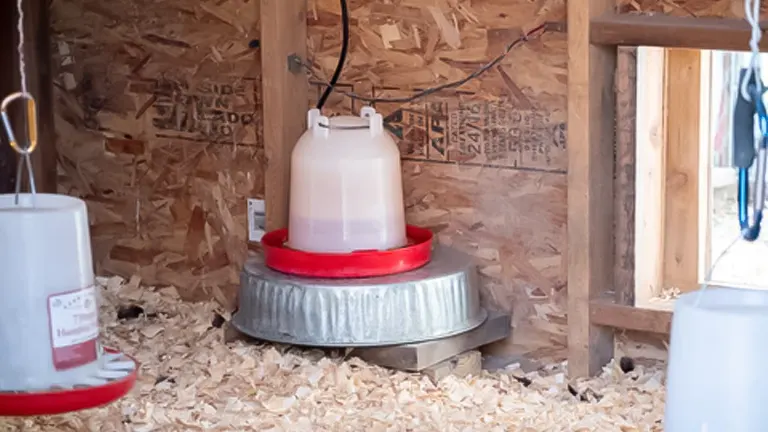
This strategic approach not only prevents the water from freezing, eliminating the need for frequent replacements but also ensures that your feathered companions stay adequately hydrated. By incorporating a heated waterer or base, you actively contribute to the well-being of your chickens, promoting optimal health even in the face of winter’s icy grip.
Implementing frost-free watering solutions goes beyond the convenience of avoiding the arduous task of constantly changing frozen water. It directly addresses the potential health risks associated with dehydration in chickens during cold weather.
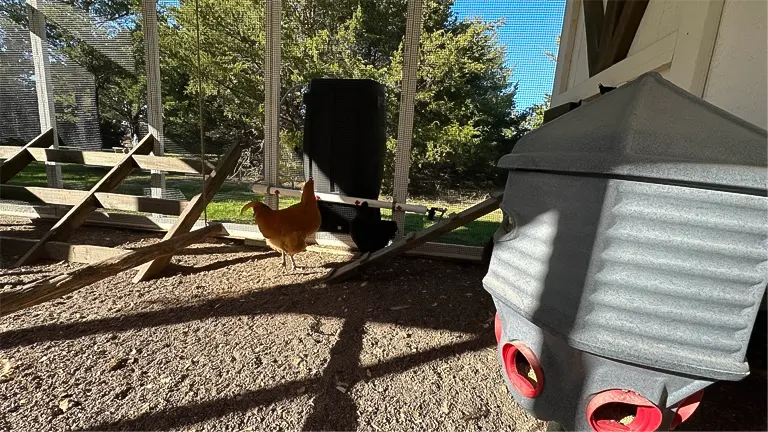
The availability of unfrozen water ensures that your flock can maintain proper hydration levels, supporting essential bodily functions and helping them withstand the challenges of winter more resiliently. This detail-oriented approach to winter care not only simplifies the daily routine for chicken keepers but also contributes significantly to the overall health and vitality of the feathered residents in your coop.
5. Safety First
Prioritizing safety is paramount when implementing a heating system in your chicken coop. The selection of heaters designed explicitly for agricultural use is foundational to a secure environment for your feathered companions. It is crucial to steer clear of open flames and space heaters, which pose a substantial fire risk within the confined space of a coop.
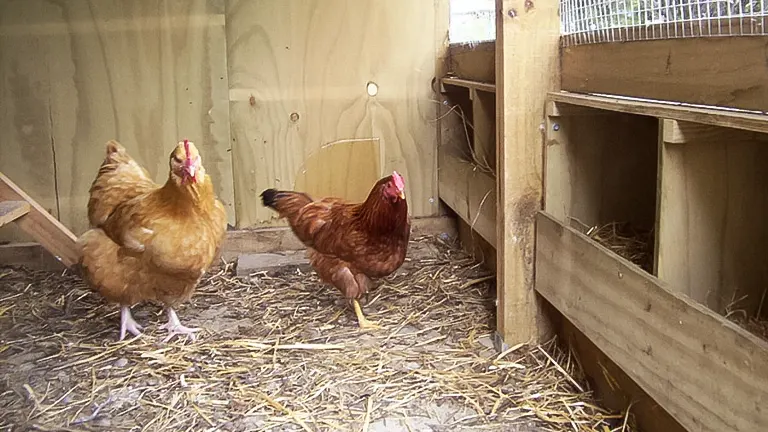
Opting for specialized agricultural heaters not only ensures efficient heating but also minimizes the potential hazards associated with inappropriate heating devices. Regular and meticulous inspections of all heating equipment should be ingrained into your coop management routine. This proactive approach ensures that heaters are in optimal working condition, identifying and addressing any issues before they escalate.
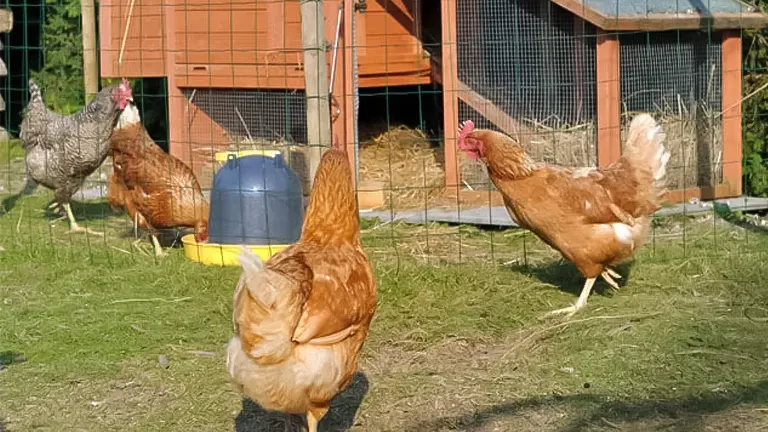
To bolster your safety measures, it’s advisable to keep a readily accessible fire extinguisher within the coop premises. This adds an extra layer of protection, providing you with the means to swiftly respond in case of any unforeseen emergencies. By adhering to these safety guidelines, you not only safeguard your chickens from potential harm but also create a secure and worry-free environment for both your feathered friends and yourself.
What are the alternatives to using heat lamps in a chicken coop?
- Hot water bottles offer a safe method to provide warmth for your chicks and chickens, eliminating the risk of fire associated with heat lamps. While they require more time and maintenance since you need to continually warm and replace the bottles, they serve as a secure heat source. Once warmed, wrapping them in a thin towel inside the coop allows chicks or chickens to comfortably snuggle up to them.
- Brooders are a reliable alternative, acting as heat plates that maintain optimal temperatures for chicks without reaching extreme surface temperatures like heat lamps. The safety factor is heightened as they won’t pose a fire risk even if they collapse onto the coop floor, unlike the potential hazards of a heat lamp.
- Heat pads provide a controlled source of warmth for chicks or chickens, with the added safety feature of not reaching extreme surface temperatures. Placing a pillow or cloth over the surface ensures a comfortable and safe heat supply without the risk of fire. Additionally, the design minimizes the chance of chicks misusing the heating element.
- Body warmth is a natural alternative, where chickens can huddle together to generate heat collectively. Purchasing more than a couple of chicks at a time allows them to form a group, taking turns keeping each other warm through cuddling and rotating within the flock.
- Thick bedding, such as wood shavings, provides a cozy environment for chickens to snuggle into when they get cold. Witnessing chicks digging into their bedding and huddling together in wood shavings demonstrates the effectiveness of this natural insulating method.
- Insulating your coop acts as a preventive measure by adding a barrier between the external environment and your chickens. This reduces the penetration of cold into the coop, creating a more insulated space and mitigating the need for excessive external heating.
What potential hazards are associated with the use of heat lamps?
Several risks are associated with employing heat lamps for warming animals:
- The animal may accidentally dislodge the heat lamp. In my case, I suspect a chicken might have flown into the heat lamp, causing it to become unstable and fall to the floor, ultimately resulting in a fire.
- Wiring issues could arise, leading to a potential fire hazard. Loose wiring that comes into contact with hay or other materials can pose a significant risk of ignition.
- Animals might chew through the wiring, exposing them to the danger of electric shock and potential fatality. Ensuring the security of the wiring is crucial to preventing such accidents and maintaining the safety of both the animals and the environment.
How can I enhance the safety of my chicken coop?
For coops equipped with electricity, it is crucial to ensure the absence of exposed wires to prevent chickens or other animals from getting entangled or attempting to bite them. Properly enclosing outlets is equally important, as mice and rodents may chew through wiring, posing potential hazards. Maintaining a clean and organized coop is essential for easy navigation in emergencies. Avoid leaving tools and unnecessary items scattered in the coop, minimizing potential risks to both you and the chickens.
Incorporating fire safety measures is paramount; always keep a fire extinguisher within close proximity to the coop. The importance of this was underscored through personal experience, emphasizing the need for swift action in case of any fires within the coop. Taking responsibility for your chickens’ safety necessitates preparedness for unforeseen emergencies.
To fortify the coop against nocturnal predators, ensure that all openings are predator-proof, especially during the night when chickens are vulnerable. A secure closure is vital to prevent predators from breaching the coop and causing harm to your flock. Additionally, hanging solar motion detection lights around the coop can serve as a deterrent, flashing on at night to ward off potential threats. This not only enhances the safety of your chickens but also provides an alert system for nocturnal activity around the coop.
Final Concluding Thoughts
In concluding my insights as a dedicated chicken owner, the task of maintaining a warm and content flock during the colder months has evolved into an instinctive responsibility. My journey has been marked by valuable lessons learned through trial and error, ultimately emphasizing the effectiveness of a multifaceted approach. Incorporating radiant heating, meticulous attention to insulation, and a keen focus on safety considerations collectively contribute to the creation of a genuinely cozy chicken coop. It’s imperative to customize these strategies to the specific size and climate of your coop, recognizing the unique needs of your feathered companions.
In doing so, you’ll not only provide a haven of comfort but also earn the delightful symphony of hearty clucks as an expression of gratitude from your cherished chickens. As winter sets in, may your coop stand as a testament to the warmth, care, and thoughtful planning invested in ensuring the well-being of your feathered friends.
Read Our Related Articles on Chicken Coop:
- Best Bedding For Chickens
- How to Build a Chicken Coop
- How To Build Chicken Nesting Boxes
- How To Keep Water from Freezing in Chicken Coop
Frequently Asked Questions
- Why is heating a chicken coop necessary?
Heating a chicken coop is essential during colder months to prevent temperature extremes that can be harmful to chickens. Maintaining a comfortable environment promotes their well-being and egg production. - What is the best heating method for a chicken coop?
The optimal heating method depends on various factors like coop size and climate. Radiant heaters suspended from the ceiling are often recommended for their efficiency and safety. - How can I ensure safety when heating my chicken coop?
Prioritize safety by using heaters specifically designed for agricultural use. Avoid open flames and space heaters, conduct regular equipment inspections, and keep a fire extinguisher nearby. - Is insulation necessary for a chicken coop?
Yes, proper insulation is crucial. It helps retain the warmth generated by heaters, making them more effective and reducing energy costs. Seal gaps and cracks in coop walls and add insulation where needed. - Can I use blankets or quilts to keep the coop warm?
Yes, covering the coop with heavy blankets or quilts during cold nights can provide additional warmth. However, ensure proper ventilation during the day to prevent humidity buildup. - Are there natural alternatives to heating a chicken coop?
Yes, consider the “Cozy Quilt Approach.” Heavy blankets or quilts draped over the coop can act as insulators, offering a more natural and low-tech solution to keep chickens warm. - What should I do if I suspect a fire in the coop?
If you suspect a fire, prioritize safety. Evacuate the chickens, have a fire extinguisher on hand, and address the source of the fire immediately. Regularly check heating equipment to prevent potential hazards. - How do I ensure frost-free water for my chickens in winter?
Invest in a heated waterer or use a heated base under the existing water container. This prevents water from freezing, eliminating the need for constant water changes and keeping your flock hydrated. - Can I leave heating equipment on overnight in the coop?
While some heating methods are designed for continuous use, it’s crucial to follow manufacturer recommendations. Always prioritize safety and avoid leaving open flames or unattended heating devices. - What is the importance of tailoring heating strategies to coop size and climate?
Coop size and climate vary, affecting heating needs. Tailoring strategies ensures efficiency and prevents overuse or underuse of heating equipment, optimizing conditions for the well-being of your chickens.
We’re eager to learn from your experiences! Feel free to share your own insights and thoughts on heating chicken coops in the comments section below. Your firsthand experiences and tips can be invaluable for fellow chicken owners, aiding them in making informed decisions to create a cozy and safe haven for their feathered friends!

Edward Smith
Forestry AuthorWoodworking is about more than crafting; it's a harmonious connection with nature, mastering tools, and preserving our environment. I'm here to share my knowledge and experiences with you, forging a future where we can embrace wood's beauty and utility while safeguarding our forests' health and diversity.




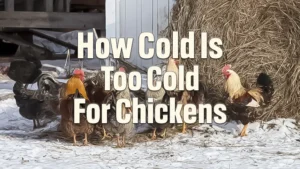








I lived in NW Minnesota and my chickens had a drafty coop and at times the air temp would be -40 °F with the wind-chill around -60 °F. All that to say that all my hens needed was a bright light bulb, open water and good feed. Never had any problems. Chickens don't need heating, they need plenty of dry straw, good feed,clean water, and a place out of the wind.
Tom
January 18, 2024 3:36 pmYour story from NW Minnesota is truly inspiring! It’s amazing how your hens thrived in such extreme cold with just the basics - a bright light bulb, open water, and good feed. It’s a testament to their resilience and your excellent care. Thanks for sharing!
Edward Smith
January 19, 2024 7:18 am